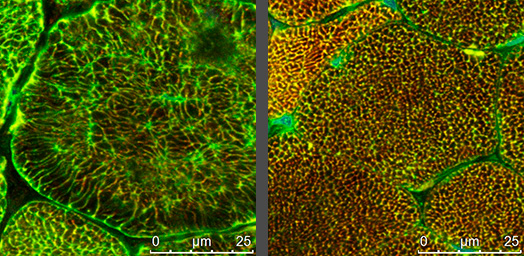RVC study explains the weakness in the most common muscle disorder of Labrador Retriever dogs
Researchers at the Comparative Neuromuscular Diseases Laboratory at the RVC have revealed the mechanisms that likely explain the weakness that occurs in the most common muscle condition of Labrador Retriever dogs – a condition known as centronuclear myopathy.
By studying muscle from affected dogs of different ages, both at light and electron microscopy levels, the researchers reveal that these dogs have progressive defects in tubular structures in muscle fibres – structures that are normally integrally involved in muscle contraction. The alterations occur in membranes known as T-tubules, which normally help conduct the wave of electrical stimulation into the interior of a muscle fibre needed for muscle contraction. In dogs with centronuclear myopathy, these structures have abnormal shapes and sizes. The changes identified for the first time in these dogs, reveal this disorder to be similar to those of a group of related muscle disorders in humans. Work conducted in these dogs might therefore help treat both dogs and humans with these disorders.

This work was conducted by Dr Gemma Walmsley in the Comparative Neuromuscular Diseases Laboratory, supervised by Professor Richard Piercy and involved a collaboration with groups in France and elsewhere. The work was funded by the Myotubular Trust and the BBSRC.
A full report of the work can be read in the American Journal of Pathology.
Walmsley, G L; Blott, S; Venner, K; Sewry, C; Laport, J; Blondelle, J; Barthelemy, I; Maurer, M; Blanchard-Gutton, N; Pilot-Storck, F; Tiret, L; Piercy, R J.
Progressive Structural Defects in Canine Centronuclear Myopathy Indicate a Role for HACD1 in Maintaining Skeletal Muscle Membrane Systems.
AMERICAN JOURNAL OF PATHOLOGY, 9440;16:30456-4. (2017)
http://dx.doi.org/10.1016/j.ajpath.2016.10.002
You may also be interested in:
-
A painful tail: RVC research reveals which dogs have greatest risk of a tail injury
A new study from the Royal Veterinary College (RVC) has found that the Boxer, English Springer …

